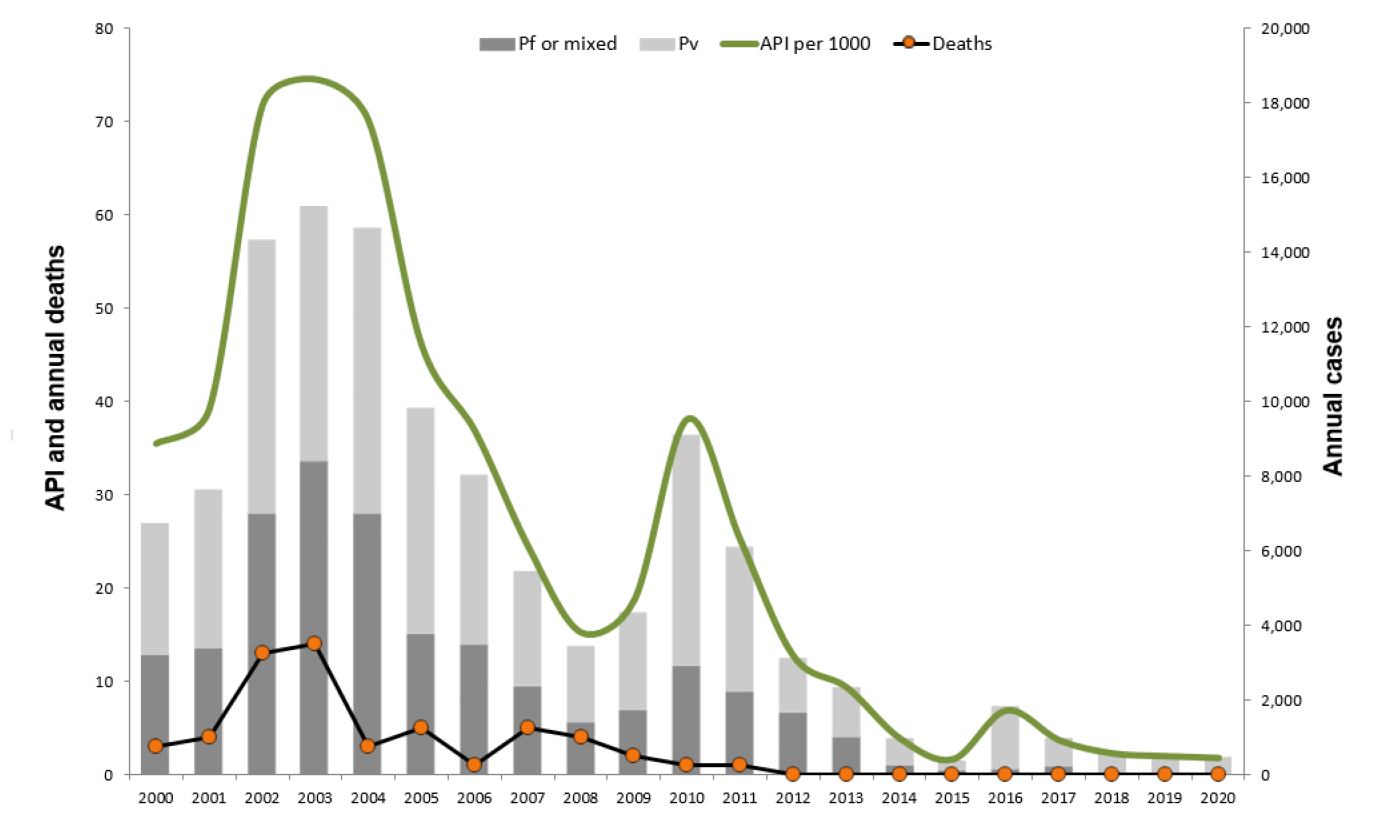Malária Vanuatuban
The risk of getting malaria in Vanuatu depends on multiple factors: Which islands are you visiting exactly? Are you planning to stay only in bigger towns and resorts or are you going also to rural areas? Is it rainy or dry season? Are there any current Malaria outbreaks?
Historically malaria used to be a massive problem in Vanuatu, but in recent years the number of infections decreased significantly. In 2010 nearly 10000 cases were reported, but this number decreased to 1000-2000 cases in 2016-17, reaching only 493 cases in 2020 and only 312 in 2021.
Tafea Province (Tanna, Erromango Aneityum, Futuna, Aniwa) didn´t report Malaria cases since 2011 and was declared Malaria free in 2017. Vanuatu´s Ministry of Health launched a national strategic plan for malaria elimination and originally it was hoped that Vanuatu can reach to be malaria-free by the end of 2023. But in July-August 2022 an outbreak occurred affecting Santo, Malekula, Epi and Vanua Lava islands and the total amount of Malaria cases in 2022 rose again to over 600.
As of 2023, not all places in Vanuatu are impacted by Malaria, and because of this the question of taking Malaria pills or not also depends on your travel plans.:
Most cases in Vanuatu are caused by Plasmodium vivax, which leads to a usually less serious form of malaria and only around 15-20% are caused by Plasmodium falciparum, which leads to malaria tropica and can bring life-threatening complications with itself. The only mosquito vector transmitting malaria in Vanuatu, Anopheles farauti is known to be living and breeding mainly in coastal areas.

Affected areas and statistics of the outbreak in 2022

API (annual parasite index) – measures confirmed new cases of malaria in a specific year, expressed per 1,000 people. It decreased significantly from 198 in 1990, to 74 in 2003 and to just 1.7 in 2020